Extract from The Guardian
My favourite Aboriginal constellation is the Great Celestial Emu, the
dark clouds of our Milky Way manifesting as a huge emu in the sky
Recently, astronomers have been calling for a “dark sky reserve” in Central Australia
– minimising artificial light to make it a reclaimed area for
astronomical observing. There are already 12 international dark sky
reserve sites around the world, but it would be the first of its kind in
Australia.
If you’ve had any form of state education in Australia, I’m sure you must have heard an Indigenous dreamtime story at least once in your life. Maybe it was Tiddalick the Frog, or maybe even the Rainbow Serpent. These stories you may have heard as a child hold a wealth of astronomical knowledge – and there’s more where that came from.
First Nations peoples of Australia have been studying the sky for tens of thousands of years. They are the first astronomers of Australia. Their science may seem subtle at first, but once you open your eyes to this alternative perspective of space and the cosmos, you will find concepts of astronomical phenomena within these star stories.
My relationship with Aboriginal astronomy started in my first year of tertiary education, around the same time I started working at Sydney Observatory. I learned about great celestial bodies in the sky and found a new perspective for the sky and the cosmos. Since then, I’ve delved into learning more about Australia’s great astronomical history and joined a group of Aboriginal astronomy researchers.
So, let me share with you some of the interesting concepts found within Aboriginal astronomy that absolutely blew my mind on my journey into the realm of the Indigenous sky.
I want to start by discussing the comparison of perspectives of the sky. In Western astronomy the sky seems very abstract, cluttered with constellations or dot-to-dot shapes and objects. Constellations that come to mind are the Southern Cross or the zodiac constellations, also known as the star signs, among many more. When looking at these constellations you can easily see that some make sense, others ... not so much. A lot of imagination is needed in some cases! Take this constellation here.

If you’ve had any form of state education in Australia, I’m sure you must have heard an Indigenous dreamtime story at least once in your life. Maybe it was Tiddalick the Frog, or maybe even the Rainbow Serpent. These stories you may have heard as a child hold a wealth of astronomical knowledge – and there’s more where that came from.
First Nations peoples of Australia have been studying the sky for tens of thousands of years. They are the first astronomers of Australia. Their science may seem subtle at first, but once you open your eyes to this alternative perspective of space and the cosmos, you will find concepts of astronomical phenomena within these star stories.
My relationship with Aboriginal astronomy started in my first year of tertiary education, around the same time I started working at Sydney Observatory. I learned about great celestial bodies in the sky and found a new perspective for the sky and the cosmos. Since then, I’ve delved into learning more about Australia’s great astronomical history and joined a group of Aboriginal astronomy researchers.
So, let me share with you some of the interesting concepts found within Aboriginal astronomy that absolutely blew my mind on my journey into the realm of the Indigenous sky.
I want to start by discussing the comparison of perspectives of the sky. In Western astronomy the sky seems very abstract, cluttered with constellations or dot-to-dot shapes and objects. Constellations that come to mind are the Southern Cross or the zodiac constellations, also known as the star signs, among many more. When looking at these constellations you can easily see that some make sense, others ... not so much. A lot of imagination is needed in some cases! Take this constellation here.

But, believe it or not, it is also a dog – little Canis Minor. Clearly!
Constellations in Aboriginal astronomy are a little more subtle than western constellations like Canis Minor. In general, a single celestial body like a star or a planet will represent a single entity or a single thing, like an animal or a person. Although, sometimes there are greater astronomical bodies that construct images in the sky. My favourite Aboriginal constellation would have to be, hands down, the Great Celestial Emu. This constellation is very different to all of the constellations mentioned so far. Instead of being forged with the bright spots in the sky, the dark clouds of our Milky Way galaxy manifest a huge emu in the sky.
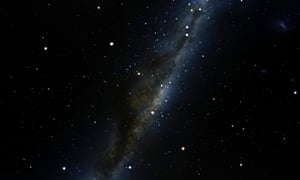
Not only does the sky act as a seasonal menu, it is also used as a tool for teaching many lessons. These lessons could be about Aboriginal law, or they could be about how the universe functions on a fundamental level. One of my favourite star stories is one that hints to multiple astronomical phenomena. This story comes from the Boorong people of the Wergaia language group, an Indigenous region in north-west Victoria. It speaks of a star called Unurgunite, an old spirit with two wives that are represented by the two bright stars either side of him.
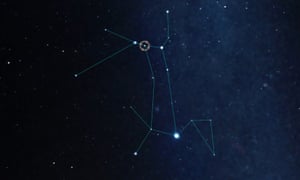
The moon, known as Mityan, fell in love with one of the wives and tried to lure her away. Unurgunite found out about this and had a great battle with Mityan. Mityan lost the battle and was left to wander the heavens forever more, the battle scars still strewn on his face.
My research in Aboriginal astronomy involves reading stories such as this one, and unveiling astronomical concepts hidden within them. While it may not be so obvious to begin with, this story has two astronomical phenomena layered within. The most obvious one is the battle scars on the face of the moon. This immediately refers to the dark patches on the moon known as mare or the seas.
The second, not so obvious phenomenon is occultation. Occultation is an astronomical phenomenon where one object passes in front of a second object, thus blocking the light from the second object. In this story, it speaks of the moon falling in love with one of the wives and luring her away. After a bit of research, it was found that the moon and one of the stars that represent the wives actually go through an occultation. I see this as the act of “luring her away” in the story.
Not only can the sky, and the stories affiliated with the sky, be used as a tool for learning about the cosmos, it can also be used for navigational purposes. The Wardaman people, an Indigenous group south-west of Kimberly in the Northern Territory, use the ecliptic and the shadow of the moon for navigation. The ecliptic is the apparent path of the sun in the sky. All of the planets, and the moon, also appear on or close to this line. Uncle Bill Yidumduma Harney, a Wardaman elder, speaks of the ecliptic as being unmissable in the sky.
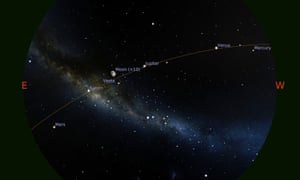
So now you can see, Aboriginal star stories are not just stories, they are lessons that educate us about the relationship between the sky and the land, as well as how the universe functions around us. This knowledge has existed for more than 65,000 years. Today, in modern Australia, we are working to learn more and revive the knowledge of Indigenous Australian astronomy. When we look at the sky in this new light, we can feel a greater appreciation for the knowledge of Indigenous Australia.
• Kirsten Banks is a Wiradjuri woman with a passion for space and astronomy. She is a 2017 CSIRO Indigenous Stem award finalist
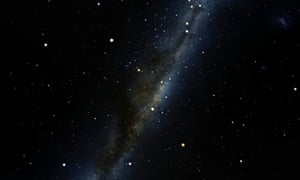
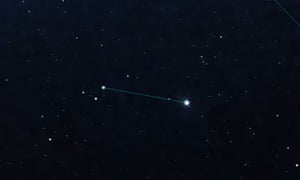
No comments:
Post a Comment